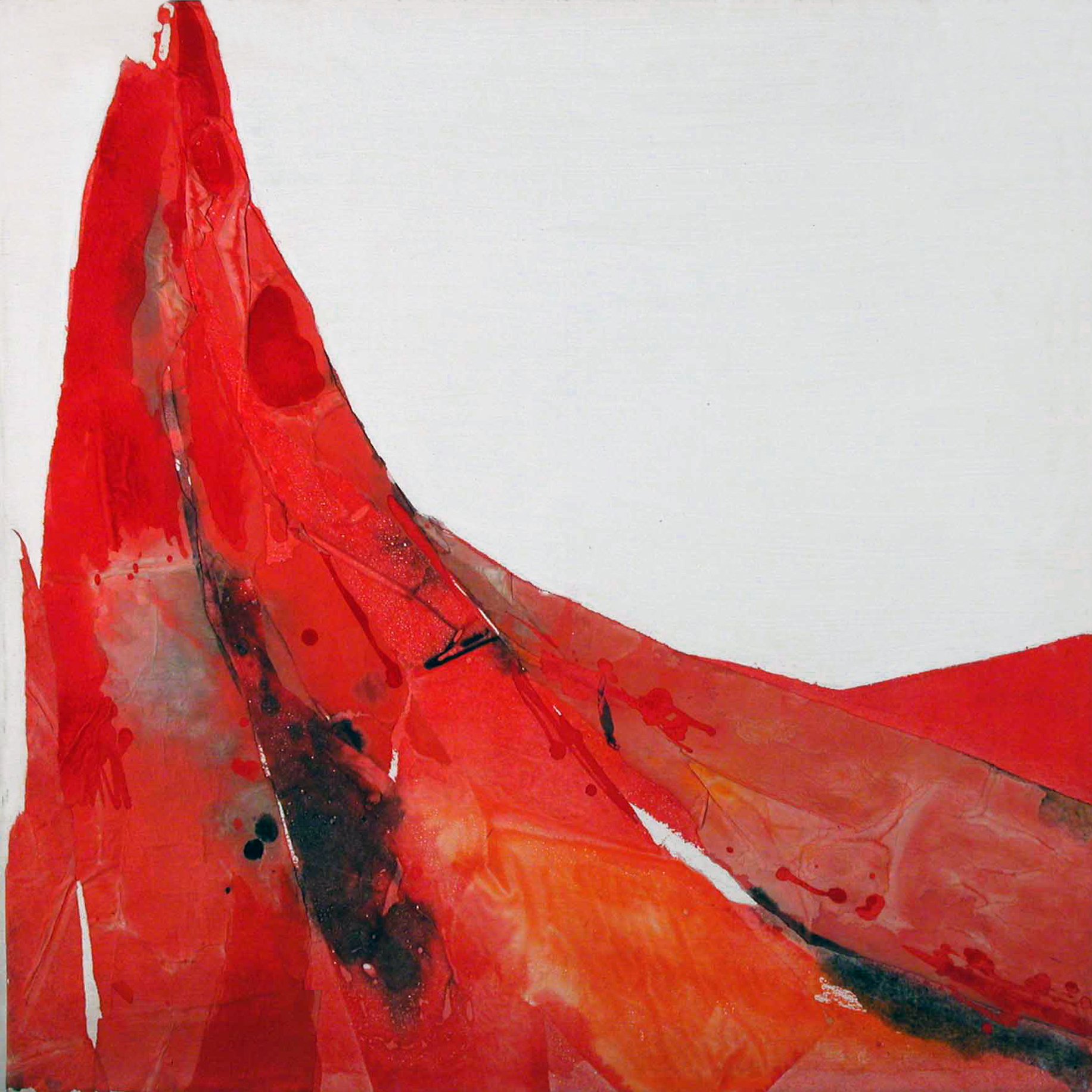みやび1「Miyabi1」
-
解 説
平松は日本で教師をしながら1964年の12月に渡米し、1965年からニューヨークのチェルシーに一年間 アトリエを借りた。そのころアメリカではリキテックスというアクリルの絵の具が生まれたばかりだった。それは日本画の伝統的な絵の具よりはるかに発色がよく、かつ透明感があった。その絵の具は水性のため偶発的なぼかしが生まれ、それらの色は複雑に混ざり合い無限の色相が生まれた。輝子は和紙をコラージュとして使ったが、発色が良いため和紙が美しく染まった。水性の絵の具を和紙に浸す手法は、油絵のようにすべて書き込む手法とは違い、そこには偶然性が潜む。それは日本の和紙と墨の関係と同様だ。墨で描いた模様のにじみやかすれ等にも偶然性が潜み、さらにその部分に美が宿る。
1966年1月に行われたマディソンアベニューのAMサックスギャラリーの展覧会は盛況だった。アクリル絵の具と和紙、墨によるカラフルなコラージュの作品は、最新なミクストメディアの作品である。アクリル絵の具を和紙に染めることによって生まれる絶妙のにじみの表堤により、見たこともないカラフルな美しさが生まれた。この展覧会についてニューヨークタイムズの批評家ジョン・カナデイが次のように批評を書き話題となる。
「色づけされた背景に、しわがつけられ鮮やかに染色された紙が張り付けられた。洗練されたスタイルのコラージュ。それらは比較するものがないほど美しく飾られその美しさのためにのみ作品が存在していると言っても過言ではない。」
またヘラルドトリビューン、アートニュース、パークイースト各紙でも評論家はその伝統的でオリエンタルな感性を高く評価した。それらの作品の構図は大胆で、抽象画でありながら俵屋宗達などの「大和絵」や、葛飾北斎や歌川広重などの日本の美術を連想させた。日本の「雅」をアメリカに提示し、かつ伝統的な「大和絵」は、新たな素材と技法で革新されたのである。
10000個の石の雨
10000個の石の雨
日 輪
フォレスト
Note
Hiramatsu went to America in December of 1964 while working as a teacher in Japan. She borrowed an atelier at Chelsea in New York for one year from 1965. An acrylic paint called Liquitex hit the United States market at that time. I had superior coloring than the traditional paints available in Japan and had a transparency. Its accidental effects produced by water dilution include intricate color mixtures and an infinite gradation of hues. Hiramatsu used Japanese paper in collage, since Japanese paper dyes beautifully.
Unlike oil paint that thickly coats the whole canvas,the technique of watercolor on Japanese paper produces the unexpected. The same relationship exists between Japanese paper and Sumi. The unexpected lurks in blots and blurs made with ink. Beauty dwells in such areas.
Exhibition at AM SACHS GALLERY, Madison Avenue in January, 1966. The colorful
collage in acrylics, Japanese paper, and Sumi were novel works in mixed media. Such exquisite expressive fields produced by dyeing, acrylics and Japanese paper had beauty of color never before seen. The critic John Canaday of the New York Times wrote up this exhibition as follows, bringing it to the center of attention.
“High-style collages in brilliantly stained paper crumpled and pasted onto painted backgrounds. They could hardly be more ornamental if they are nothing more than something good to look at, neither are they anything less.”
The critics also esteemed the traditional and oriental sensitivity in the Herald Tribune, Art News and PARK EAST. Though the compositions of those abstract works is bold, they suggest the “Yamatoe” created by Soutatsu Tawaraya, Hokusai Tatsushika and Hiroshige Utagawa. Japanese “Miyabi” was shown to the United States, and traditional “Yamatoe” was reformed by new materials and techniques






